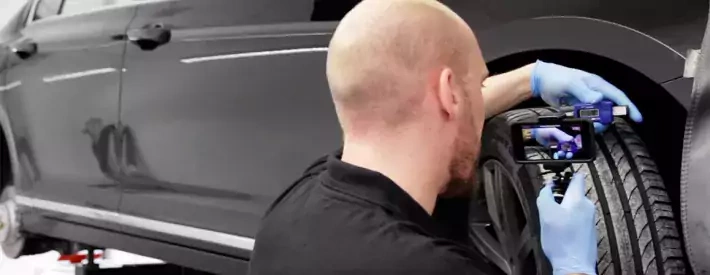Four benefits of using video to communicate with customers

In this article: Communicating with customers is changing and video is becoming increasingly important, and could help grow your business whether it boosts sales or build confidence in your aftersales
Video is playing a growing role in society, more and more people use it to stay in touch with friends and family, but it’s a tool that could become a greater part of our working lives too.
The Coronavirus pandemic has accelerated video conferencing in businesses, but it can be used in far more than just online meetings. Video can help boost sales, streamline workshops, take the pressure off bodyshops and help customers once they’ve driven away. It’s worth looking at how it could improve your business, whether you’re a small independent or a multi-site operation.
Technology firm CitNOW introduced video into the sales process in 2008 and has expanded its product range to help more parts of the motor industry benefit from the systems. It’s Global Sales Director Gordon Grant gives his four benefits for using video.
1. Engage with customers
“From a sales perspective, it’s about emotional engagement and being able to efficiently respond to an inquiry, digitally taking the car to the customer. The benefit is that the retailers will convert more inquiries because they are able to engage with the customer and put the car in front of them.”
2. Build trust in the workshop
“The average workshop video is about 90 seconds long, and is the technician using video to communicate anything that's been identified in the health check process. The benefit is you're building trust with the customer.
“Typically, in the workshop environment, your car goes in for a service in the morning, comes out in the evening and you've got a bill. But if you're a customer and you receive a video when the car was in the workshop, directly from the technician, enabling you to validate facts, it's easier to say yes [to the charges].”
3. Add reassurance in the bodyshop
“In the body shop video is generally used for condition assessment and customer reassurance. Working with the provider or insurer in most cases to explain the rationale behind a particular assessment.
“So, the car needs a new door, and here's why it needs a new door, rather than an estimate with a bunch of still images where it's difficult for the assessor to work out the reason. [Users can say] ‘Well the frame's kinked and I'm going to show you in this video where it's kinked.’”
4. Keep customer follow-ups streamlined
“A customer buys a new car, they come to collect the it, the sales executive sits down with them in the car, showing them all the features and benefits and controls. But they're not really paying attention, because they just want to get going.
“In the past the customer runs back and says can you remind me how this works.
We started working with Porsche last year to do that digitally, and that process has been embraced by a lot of other retailers and a lot of other brands now.”
The world is changing and video is becoming an increasingly important method of communication with customers, and could well be worth investing in to help improve your business.




